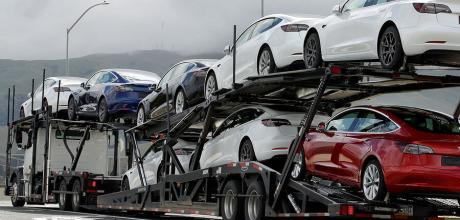Ageing of the electric vehicle
Most readers will be aware of the degradation effects of ageing in electric vehicles with lithium-ion batteries, which are primarily related to the crystal structure and chemistry of the electrodes. It's a result of the inevitable charge/recharge cycle, how many times this takes place, and the rate of charge and discharge. The effects of extreme temperatures are also significant, when the battery operates outside of its optimum band of 20 to 25 degrees Celsius.
HOW IT WORKS
With an awareness of this, and the high cost of battery replacement, manufacturers offer a battery warranty, offering the full costs of replacement if the battery charge capacity falls below 70% of its nominal new capacity, usually along with a mileage limit of 100,000 to 150,000 miles. With that in mind, what can owners do to maximise battery life – much as they would look to maximise the life of a diesel or petrol car, by treating it with respect and avoiding activities that could shorten the battery life, and possibly power output? There's another reason to be aware of your charging and driving habits. In a few years’ time, when people start trading in 5-, 6-, and 7-year-old EVs, smart dealers are going to look at usage history, gleaning information from the car's stored charging history, and your trade-in figure will reflect how you have treated the battery during your ownership. Just like checking to see the car’s service history.
Degradation and loss of range comes from a number of effects, of which charge and discharge rates are significant, with high charge rates increasing capacity loss on a per cycle basis. The state of charge (SOC) of the battery when it charges is also significant, and most owners will be aware that it is advisable to not drop either below a 20% charge level or above an 80% level during normal usage, as this helps preserve battery life. But EV manufacturers know this, and they structure a vehicle’s battery management system to ensure that extremes of charge level don’t happen, so when an EV shows a 100% state of charge, the battery is only about 90% charged, with the 10% left unused as a buffer to prevent overcharging. That's really a point to make suggesting that there's no further benefit in you keeping the charge level to between 30 and 70%, because you'll be charging it more often that way, which in itself will age it.
Let's look at charging rates, though, which can vary as much as from 3 or 7kW domestically to 150kW for rapid DC charging. Rapid charging, above 50kW, increases battery degradation, particularly in high ambient temperatures. After four years of testing in a hot climate, consistently rapid charged EVs had lost twice as much of their original capacity as those normally charged. It is best to think about whether you really need to save that time when tempted by rapid chargers, although perhaps many users of company cars may not care that much. At the other extreme, should you automatically put your EV on charge when you get home from work, to keep it topped up? The science says no. Unless you're planning a long trip, wait until the level has dropped to 20 or 30%, and then charge it up to 80%. With a 7kW domestic charger, that's only going to take five to seven hours, so (aside from holidays or other long trips) it's best to charge up once a week, if your weekly mileage is only 100 to 150 miles.
“LET'S LOOK AT CHARGING RATES THOUGH, WHICH CAN VARY AS MUCH AS FROM 3 OR 7kW DOMESTICALLY TO 150kW FOR RAPID DC CHARGING.”


